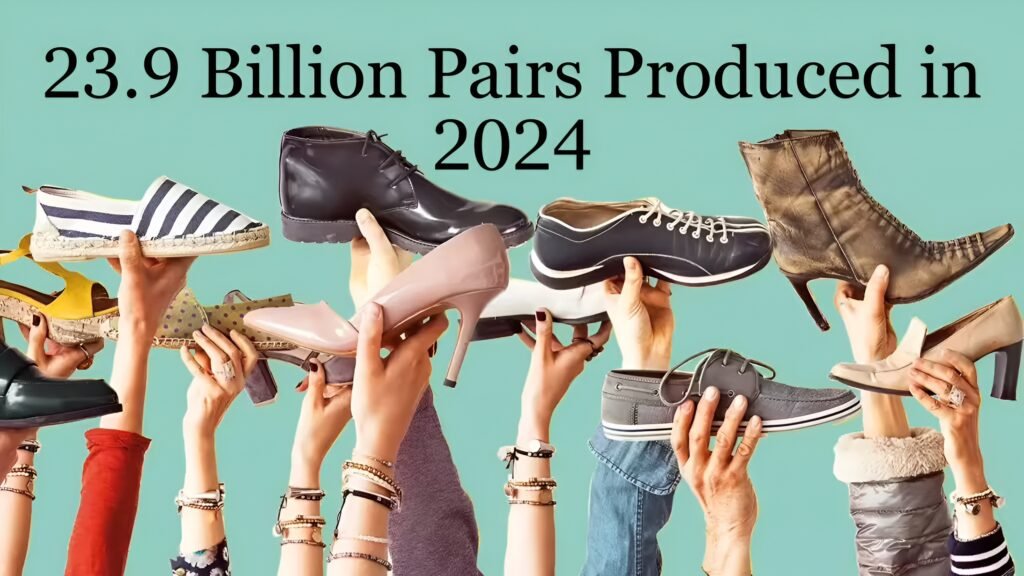After a tough 2023, the global footwear industry made a solid comeback in 2024. According to the World Footwear Yearbook 2025 by APICCAPS, global footwear production jumped by 6.9% and hit 23.9 billion pairs.
That’s a recovery of the 1.5 billion pairs lost in the previous year. The growth came mostly from rising demand in major markets like the United States, China and the European Union.
In the US, people bought 168 million more pairs than last year. In China, that number was even higher at 469 million extra pairs. The EU added 121 million more pairs to its tally.
On the trade front, exports also went up. The world shipped out 14.8 billion pairs of shoes, a 4.6% rise compared to 2023. The total export value stood at $170 billion, only slightly up by 0.1% but still the second-highest ever.
Asia remained the powerhouse of the industry. It made 88% of all the shoes produced worldwide. China alone produced 13 billion pairs, keeping its position as the top producer with 54% of the market. India strengthened its hold with a 12.5% share while Vietnam came in third at 6.5%.
Shoe consumption is also growing across Asia. The region accounted for 55.5% of global demand. North America followed with 13.6% and Europe with 13.5%. Per person, North Americans bought the most 4.8 pairs while in Africa the average was just 1.4.
China topped the list as the largest consumer of footwear, making up 18.6% of global demand. India came second with 13.3% and the US held third place with 9.8%.
In exports, Asia further solidified its lead with 85.1% of global volume, slightly up from a decade ago. While China remains the biggest exporter at 62.2%, its grip is loosening down from 63.8% last year.
Vietnam held 10.7% and Indonesia had 4.1%, together covering over three-quarters of the world’s shoe exports.
One major shift in 2024 was in pricing. After years of rising costs, the average export price per pair fell from $11.98 in 2023 to $11.47. This could be a result of brands adjusting their pricing or focusing on lower-cost products after years of inflation.












